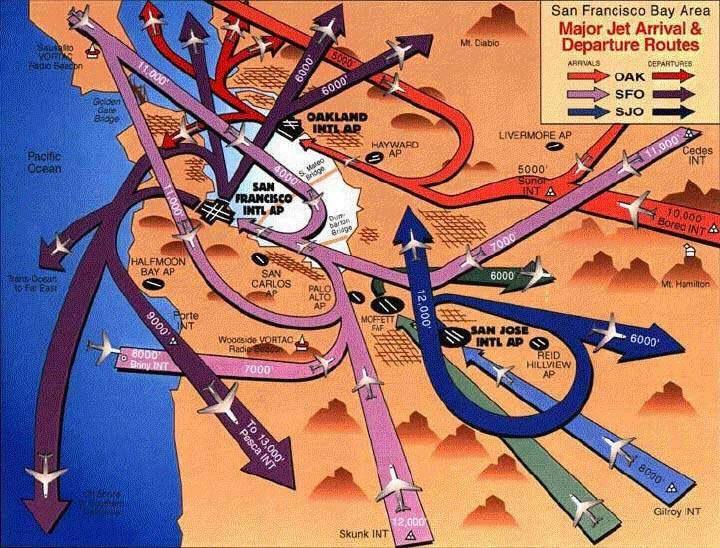Airplanes continue to soar over Palo Alto in droves due to changes made by the Federal Aviation Association, despite many residents’ protests to end the noise. Through petitions, plane noise reports and emails to city officials, local group “Sky Posse” aims to reduce the number of planes overhead by redesigning the Bay Area’s airspace and collaborating with both the City of Palo Alto and the FAA.
Sky Posse has outlined two major problems with by FAA’s Next Generation Air Transportation System, a new arrangement that decreases wasted fuel and plane flight times while simultaneously increasing flights over urban areas. These issues are noise and environmental pollution. Sky Posse’s actions and intentions in both of these cases are superb, but analysis of Palo Alto’s air quality has garnered mix results. And while airplane noise can be annoying, Palo Alto should do more than reroute planes if we wish to limit sound pollution.
According to Sky Posse’s website, airplanes flying over Palo Alto have increased nearly 200% since NextGen’s implementation. To better understand the effects of these changes on the community, I spoke with Phil Martien, air quality engineering manager from the Bay Area Air Quality Management District. According to Martien, these flights do not have a large environmental impact on the Bay Area.
“Commercial aircrafts do contribute to the Bay Area’s inventory of air pollution emissions for compounds that have direct health impacts, but compared to the region’s total, they are not a major source,” Martien said. “Because the jet flights are above the immediate layer of air where people live and breathe, the direct impact of these flights and changes to flight paths won’t have a big impact on air quality.”
In addition, Martien says that the Bay Area’s air quality is good compared to other urban American cities, and is improving.
Our air may not appear to be greatly affected by NextGen’s redirected flights, but the City of Palo Alto should study the long-term effects of airborne transportation on the environment.
“I would say that even if the impact on air quality is not a ‘big impact’ … it is still an impact and I would like our air quality analyzed in the most up to date way possible,” Sky Posse co-leader Rachel Kellerman said.

Despite little cause for alarm with regards to air quality, Sky Posse is correct that resulting sound pollution is an issue.
“They [new flight routes] could have significant impacts on noise levels,” Martien said. “And noise itself can have health impacts.”
The airplane noise itself is not generally bothersome compared to other forms of transportation in Palo Alto. After all, over 25 trains pass parallel to Palo Alto High School each day, and its cacophonous horns are far more likely to disturb my daily life than a plane thousands of feet in the air. In addition, Palo Alto’s population nearly triples each day due to commuters entering and leaving for work. The resulting traffic, from buses to honking cars, largely outweighs any noise pollution from planes.
However, some residents claim the planes’ noise has negatively impacted their overall well-being.
“I don’t mind complaining. I just mind the planes and the noise,” one woman at a Sky Posse meeting said.
Low-flying planes may be irritating to some Palo Altans, but this newfound noise is only the tip of the iceberg. If we wish to limit noise pollution, we should not restrict ourselves to focusing solely on that of airplanes. Traffic congestion and trains’ blaring horns are issues that are just as important to address. If we want a happier and quieter community, collaborating with both the FAA and local city councils is a vital step on limiting all unneeded noise, regardless of the source.


